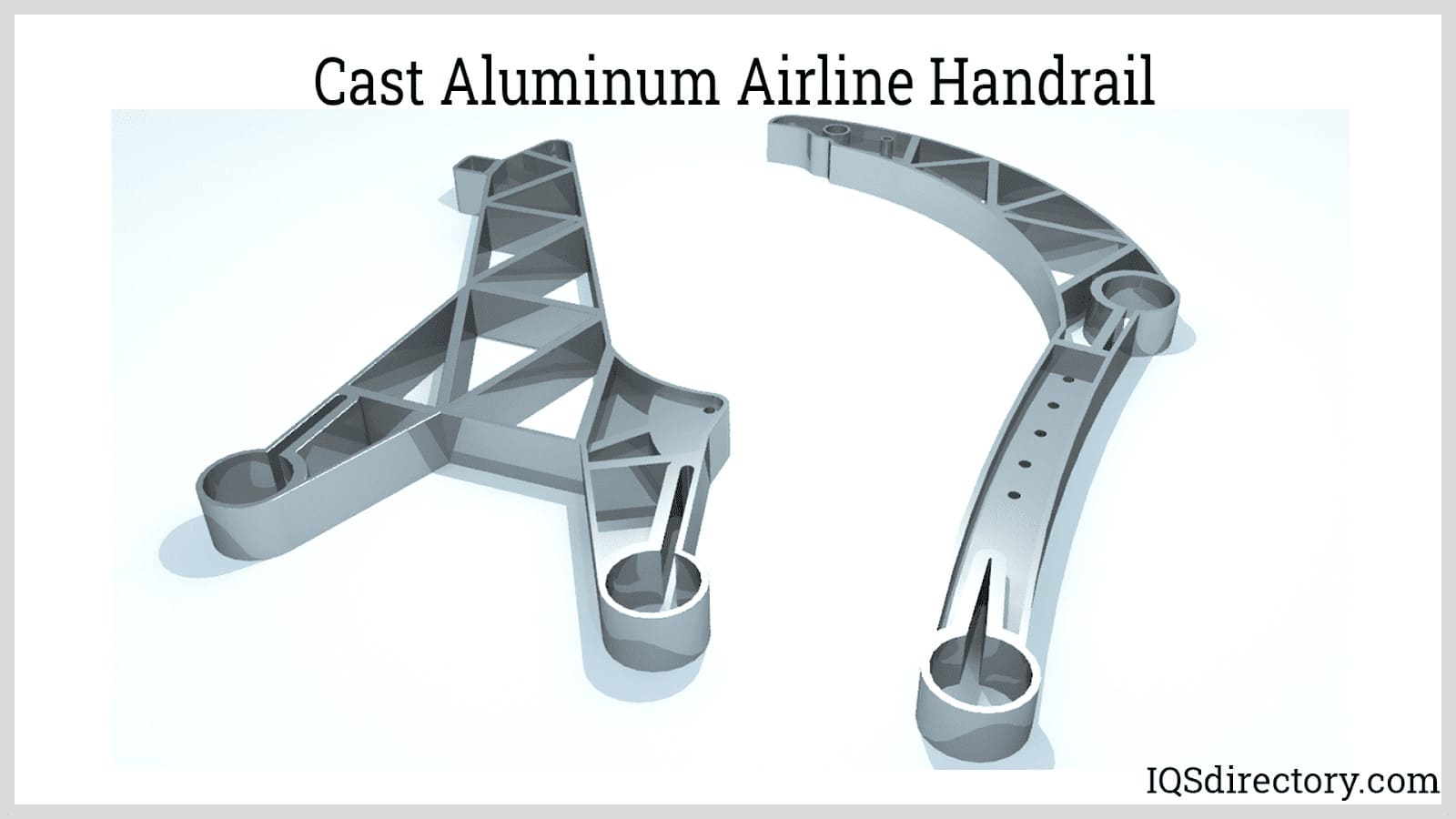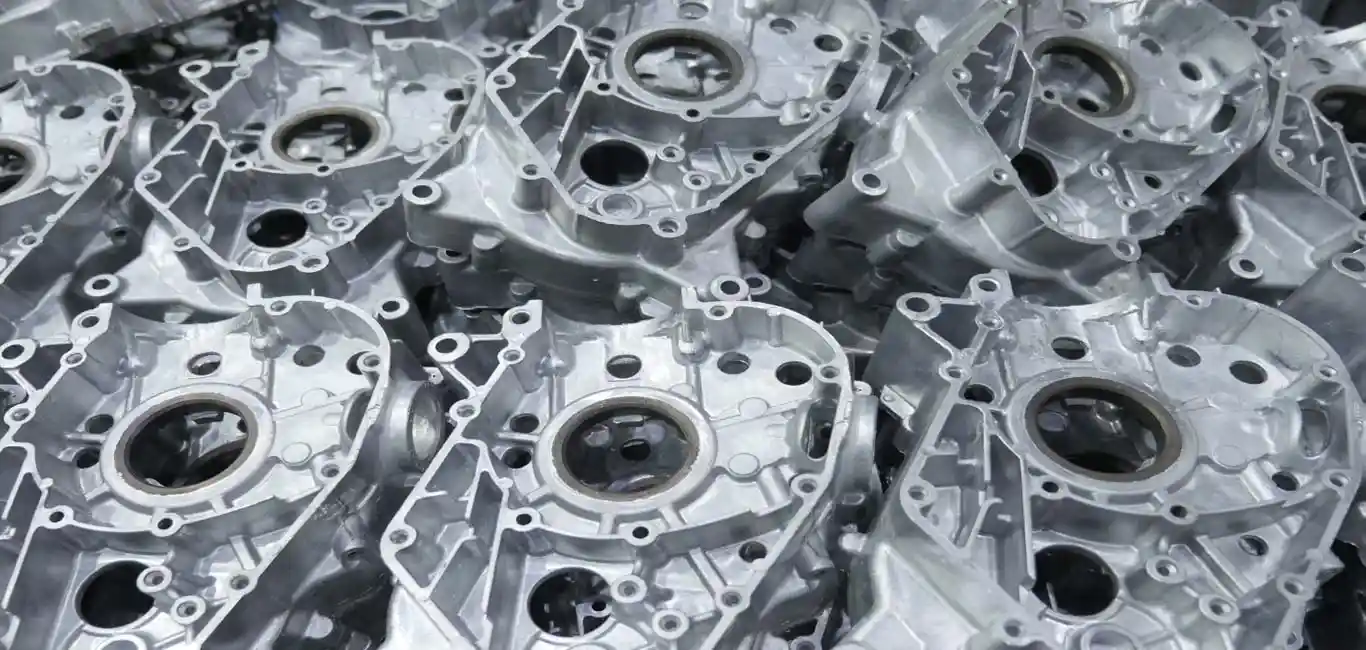The role of Aluminum Castings in electronics
The Duty of Aluminum Casting in Advancing Sustainable Production Practices
Aluminum casting works as a vital element in advertising lasting manufacturing methods. Its capacity to produce high-grade elements with a reduced environmental footprint is impressive. The process not just supports power effectiveness but likewise greatly enhances recyclability. Obstacles continue to be in totally understanding its potential. Exploring the innovations in aluminum casting technology can reveal options that straighten making with sustainability objectives. The effects of these developments deserve taking into consideration.
Comprehending Aluminum Casting and Its Refine
Although aluminum casting has actually been an essential process in manufacturing for years, its relevance continues to expand in numerous markets due to its versatility and performance. This procedure involves putting molten aluminum right into molds to develop complex shapes and parts, making it suitable for producing light-weight yet resilient items. The aluminum casting process can be classified into numerous techniques, consisting of sand casting, die casting, and financial investment casting, each offering distinct benefits fit to details applications.
During the casting procedure, aluminum is heated to its melting factor, enabling it to move quickly right into molds that specify the final shape. As soon as cooled down, the aluminum solidifies, leading to a solid and exact component. The ability to produce intricate geometries with very little waste underscores aluminum casting's duty in contemporary manufacturing - Aluminum Castings. As sectors seek innovative solutions, understanding this process becomes vital for optimizing manufacturing and fulfilling the demands of a developing market
Environmental Advantages of Aluminum Casting
As industries significantly prioritize sustainability, the environmental advantages of aluminum casting become more noticable. One considerable benefit is the material's recyclability; aluminum can be reused repeatedly without weakening its high quality. This reduces the amount of waste sent out to garbage dumps and minimizes the need for virgin materials, conserving natural deposits. Furthermore, the aluminum casting process produces less greenhouse gas discharges contrasted to other steel casting approaches, adding to reduced overall environmental effect.
Another benefit exists in the light-weight nature of aluminum, which leads to sustain performance in transport applications. By making use of aluminum components, makers can minimize vehicle weight, resulting in decreased gas intake and exhausts throughout procedure. Innovations in aluminum casting innovations have led to a reduction in unsafe waste manufacturing, improving total eco-friendly security. Collectively, these variables setting aluminum casting as an essential player in advertising sustainable production methods and meeting ecological goals across various sectors.
Power Efficiency in Aluminum Production
Power effectiveness plays a vital function in aluminum manufacturing, noticeably affecting general sustainability. By adopting cutting-edge casting techniques and incorporating renewable energy resources, producers can achieve minimized energy intake throughout the production process. This change not just reduces operational prices however also adds to a much more eco-friendly sector.

Reduced Energy Intake
While the aluminum production market has typically been energy-intensive, recent developments have greatly improved power performance throughout the production process. Innovations in smelting technology and the fostering of high-efficiency heaters have substantially minimized power intake. These improvements permit makers to use less energy each of result, decreasing greenhouse gas discharges and reducing functional prices. Furthermore, the integration of renewable energy resources right into production facilities better adds to decreased reliance on nonrenewable fuel sources, advertising sustainability. Carrying out sophisticated insulation materials and optimizing heat recuperation systems additionally plays an essential function in making best use of power effectiveness. Because of this, the aluminum industry is making substantial strides toward decreasing its general environmental impact while satisfying the raising need for lasting practices in production.
Ingenious Casting Techniques
Cutting-edge casting methods are transforming the aluminum production landscape, enhancing both effectiveness and sustainability. Advanced techniques such as die casting and financial investment casting minimize material waste and boost dimensional precision, causing lowered energy consumption throughout the production procedure. Strategies like rapid solidification and semi-solid processing enable far better control over metallurgical properties, leading to light-weight and high-strength parts. Additionally, the implementation of computer simulations and automation in casting processes optimizes cycle times and decreases problem rates. These advancements not just enhance manufacturing however likewise contribute to the circular economic climate by making it possible for the recycling of aluminum scrap right into top notch items. As an outcome, the aluminum sector is positioned to satisfy expanding needs while adhering to sustainable manufacturing practices.
Renewable Resource Integration
A considerable shift in the direction of renewable power assimilation is improving power effectiveness in aluminum manufacturing. This modification involves using solar, wind, and hydropower sources to lower reliance on fossil gas, greatly lowering carbon emissions. Facilities are increasingly taking on energy-efficient modern technologies, such as innovative electrolytic processes, which enhance energy consumption during aluminum manufacturing. By harnessing renewable resource, producers not only lower functional costs but also enhance their sustainability accounts. In addition, clever grid modern technologies assist in the smooth integration of sustainable resources, enabling for more secure power products. As the sector welcomes these developments, the aluminum field is positioned to lead in sustainable practices, showing a dedication to environmental stewardship while meeting raising international need for lightweight, high-performance materials.
The Recyclability of Aluminum and Its Impact
Aluminum's recyclability offers substantial benefits in sustainable manufacturing, enabling boundless recycling without loss of quality. This residential or commercial property not only reduces waste but also enhances power efficiency throughout the reusing process. Consequently, the impact on both the setting and manufacturing prices is profound, making aluminum a popular material in eco-conscious markets.
Infinite Recycling Potential
Although lots of materials lose quality via recycling procedures, aluminum sticks out due to its limitless recyclability, which greatly adds to sustainable production practices. This special particular permits aluminum to be reused repeatedly without degrading its residential or commercial properties, making it a useful source in numerous sectors. The lifecycle of aluminum starts over again with each reusing initiative, conserving resources and decreasing waste. This not only lessens the Go Here ecological effect however likewise promotes a circular economic situation where aluminum can be recycled plenty of times. The high demand for recycled aluminum further emphasizes its value in lasting production, as it improves source performance and advertises a green strategy to manufacturing. Ultimately, the infinite recycling potential of aluminum plays a considerable duty ahead of time sustainable practices across industries.

Energy Efficiency Conveniences
Considerable energy financial savings are recognized via the recycling of aluminum, highlighting its function in lasting manufacturing. Recycling aluminum calls for only 5% of the energy needed to create new aluminum from raw products. This significant reduction in energy usage converts right into reduced greenhouse gas emissions, adding to environmental sustainability. The energy effectiveness of aluminum recycling not just saves sources yet additionally lowers functional expenses for suppliers, making it an economically practical alternative. Furthermore, the procedure of reusing aluminum can be incorporated into existing production lines without significant disruption, enhancing overall efficiency. As industries progressively focus on sustainability, the recyclability of aluminum settings it as a principal ahead of time energy-efficient production methods, cultivating a circular economic climate and promoting accountable source administration.
Challenges Facing Aluminum Casting in Sustainable Practices
While the aluminum casting industry has made strides in the direction of sustainable practices, a number of obstacles remain that hinder its progress. One considerable problem is the high energy intake linked with typical casting approaches, which usually depends on nonrenewable fuel sources. This dependancy not only increases operational prices yet likewise adds to greenhouse gas emissions. Additionally, the recycling process for aluminum can be ineffective, causing material loss and raised waste. An additional obstacle is the restricted accessibility of sustainable resources, as sourcing recycled aluminum can be tough and costly. Moreover, governing stress and varying ecological requirements across areas complicate compliance efforts, making it challenging for business to embrace consistent lasting practices. Labor force training stays poor, with several employees lacking the necessary skills to execute ingenious, environment-friendly strategies in casting procedures. Addressing these challenges is vital for the aluminum casting market to completely recognize its possibility in lasting production.
Advancements in Aluminum Casting Modern Technology
To get over the challenges encountered in lasting techniques, the aluminum casting sector is observing a wave of innovations targeted at enhancing efficiency and decreasing environmental impact. Advanced casting techniques, such as 3D printing and die casting, are being adopted to reduce material waste and improve accuracy. These modern technologies make it possible for makers to create complicated geometries with less aluminum, thus saving resources.
Additionally, the assimilation of reusing methods, including closed-loop systems, helps with the usage of scrap aluminum, substantially lowering power usage compared to main aluminum production. Enhanced mold designs and coverings are also adding to sustainability by boosting thermal effectiveness and decreasing emissions during the casting process.
In addition, automation and wise manufacturing technologies are being executed to optimize production processes, resulting in reduced cycle energy and times usage. Collectively, these developments stand for a substantial shift in the direction of more lasting practices within learn this here now the aluminum casting market, lining up with broader ecological goals.
Future Leads for Sustainable Production With Aluminum Casting
As the demand for lasting production practices heightens, the aluminum casting market is positioned to play an essential duty in forming a greener future. The sector is increasingly adopting recycling procedures that substantially reduce waste and energy usage, lining up with international sustainability objectives. Innovations such as low-energy casting techniques and using recycled aluminum not only reduce carbon footprints however additionally improve the total efficiency of production.

As industries seek to conform with more stringent ecological guidelines, the aluminum casting market stands prepared to offer sustainable services, positioning itself as like it a principal in the change towards environmentally friendly manufacturing practices in numerous industries, including automobile and aerospace.
Regularly Asked Inquiries
Exactly How Does Aluminum Casting Compare to Other Steel Casting Techniques?
Aluminum casting typically provides benefits such as reduced melting points and superior recyclability contrasted to other metal casting approaches. Its lightweight nature and excellent deterioration resistance additionally improve its appeal in numerous manufacturing applications.
What Industries Advantage A Lot Of From Aluminum Casting?
Different sectors, consisting of automotive, aerospace, and customer products, significantly take advantage of aluminum casting - Aluminum Castings. This technique's lightweight, corrosion-resistant homes enhance item performance while permitting elaborate layouts, making it an appealing alternative for makers looking for effectiveness and innovation
Can Aluminum Casting Be Utilized for Complex Styles?
Aluminum casting can effectively fit intricate styles as a result of its flexibility and capacity to form complex shapes. This procedure enables producers to create lightweight, sturdy elements ideal for various applications across various industries, enhancing advancement and efficiency.
What Is the Life Expectancy of Aluminum Cast Products?
The life-span of aluminum cast products commonly ranges from a number of years to over a century, depending on elements such as ecological problems, maintenance, and the certain application. Durability makes them appropriate for numerous long-term uses.
Exactly How Does Aluminum Casting Influence Job Production in Production?
Aluminum casting significantly adds to task production in manufacturing by promoting competent labor opportunities, supporting regional economies, and encouraging technical advancements. This process not just enhances production effectiveness yet also promotes labor force advancement and training campaigns.